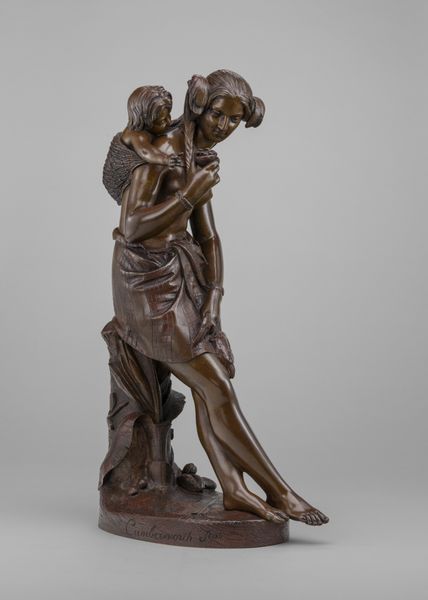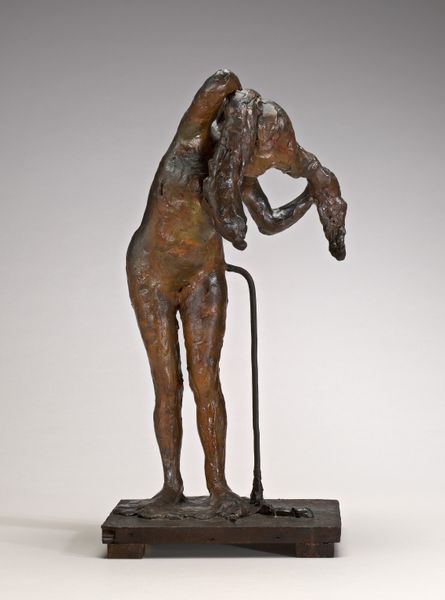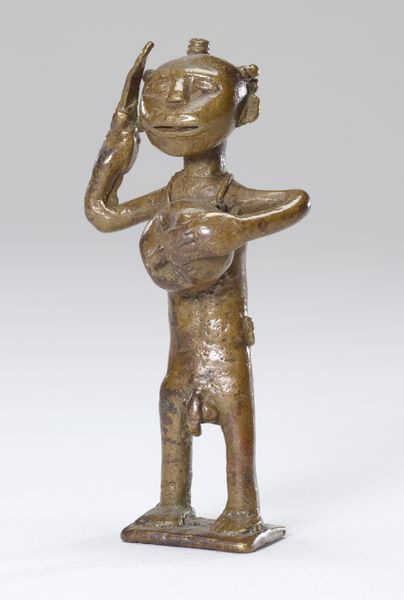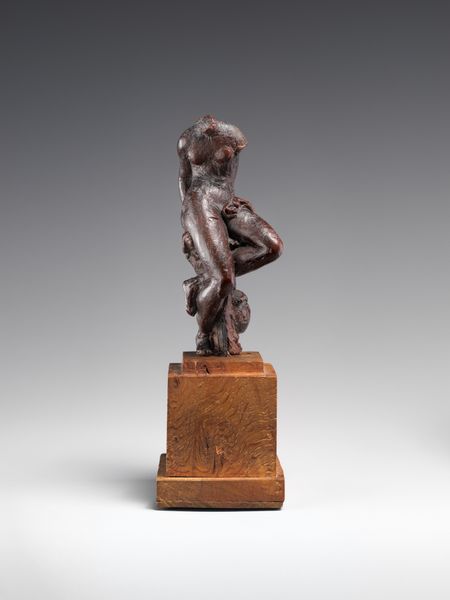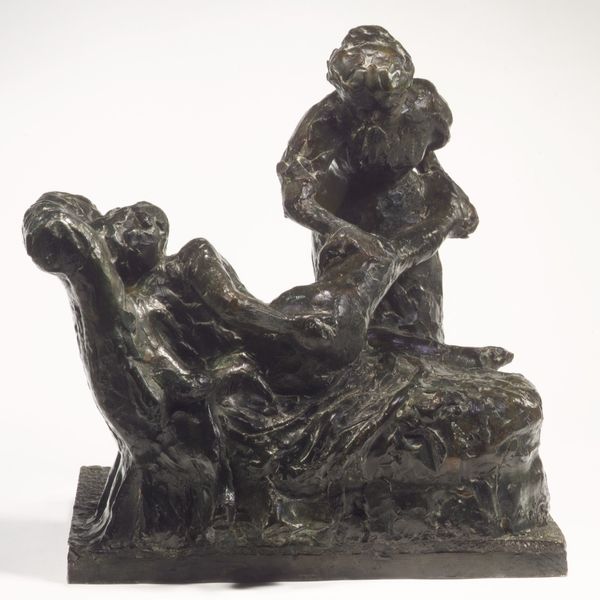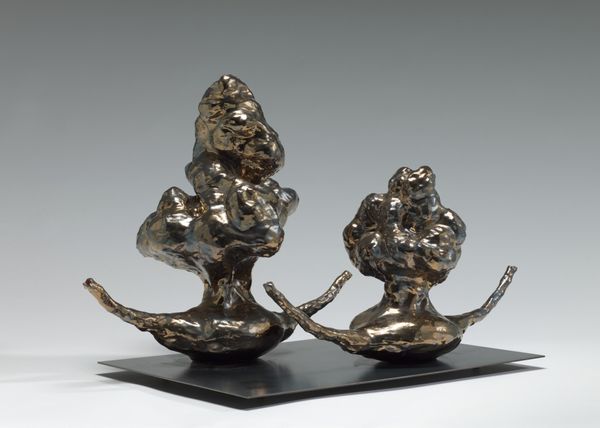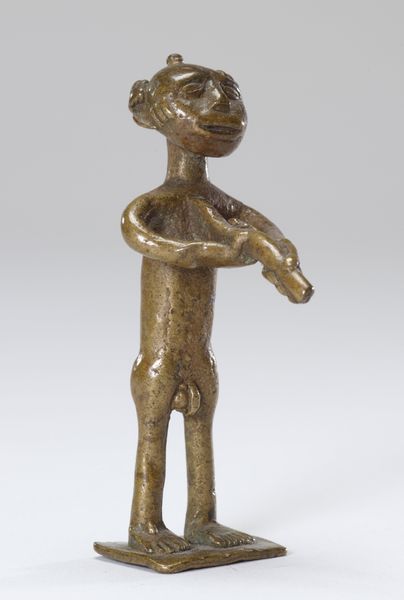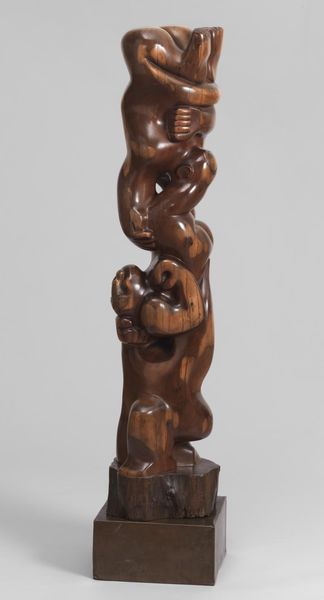![Goldweight [Standing Figure Behind Seated Chief] by Akan](/_next/image?url=https%3A%2F%2Fd2w8kbdekdi1gv.cloudfront.net%2FeyJidWNrZXQiOiAiYXJ0ZXJhLWltYWdlcy1idWNrZXQiLCAia2V5IjogImFydHdvcmtzL2UyNDAwMzc4LTM5YzctNDRmNC1iZTFhLWFkNWJkZGZlN2ZkYy9lMjQwMDM3OC0zOWM3LTQ0ZjQtYmUxYS1hZDViZGRmZTdmZGNfZnVsbC5qcGciLCAiZWRpdHMiOiB7InJlc2l6ZSI6IHsid2lkdGgiOiAxOTIwLCAiaGVpZ2h0IjogMTkyMCwgImZpdCI6ICJpbnNpZGUifX19&w=3840&q=75)
Goldweight [Standing Figure Behind Seated Chief] 19th-20th century
0:00
0:00
brass, sculpture
#
brass
#
sculpture
#
figuration
#
sculpture
#
miniature
Dimensions: 2 7/8 x 1 11/16 x 1 in. (7.3 x 4.29 x 2.54 cm)
Copyright: Public Domain
Curator: This striking brass sculpture, made by an Akan artist sometime in the 19th or 20th century, is titled “Goldweight [Standing Figure Behind Seated Chief]”. The Minneapolis Institute of Art is fortunate to have it in their collection. Editor: It’s small, isn't it? A miniature world, almost. I'm immediately drawn to the relationship depicted – this seated figure who seems to be receiving counsel or support. It has a kind of quiet intensity. Curator: These goldweights served a very specific purpose within Akan society. Brass casting became extremely important as they used it in trade; the use of scales, weights, and balances became a common business practice during the height of the gold trade with Europeans. This sculpture acted as an element for ensuring accuracy of transactions, where gold was the medium. Editor: Fascinating! So even within something as functional as weights, there was room for narrative and social commentary. The depiction of authority, support, the seated chief versus the standing advisor… were the positions of power defined and enforced via this object? Curator: Certainly, it tells us a great deal about Akan power structures and social relations. This object served to validate roles. And we must consider too that its brass fabrication and function elevates local craft and artistry. Editor: Absolutely. It underscores the ingenuity required to work with material and social hierarchies and the skill involved in casting these miniatures—this piece offers tangible evidence of an integrated worldview that binds functionality with visual storytelling and economic factors with tradition. Did its use shape power or did the power shape the need of such objects? Curator: These are complex considerations, and they shift as social factors and historical events changed. What is clear is the reciprocal relationship between those factors. It truly encourages us to look more deeply at art’s social function beyond simple aesthetics. Editor: Indeed. Something as seemingly simple as a weight becomes a window into so much more, from trade routes to social values, prompting considerations on how art reflects social dynamics and institutional power structures across cultures and generations. Thank you. Curator: It’s a remarkable demonstration of how the material intersects with meaning and reinforces social structures. My pleasure.
Comments
No comments
Be the first to comment and join the conversation on the ultimate creative platform.
